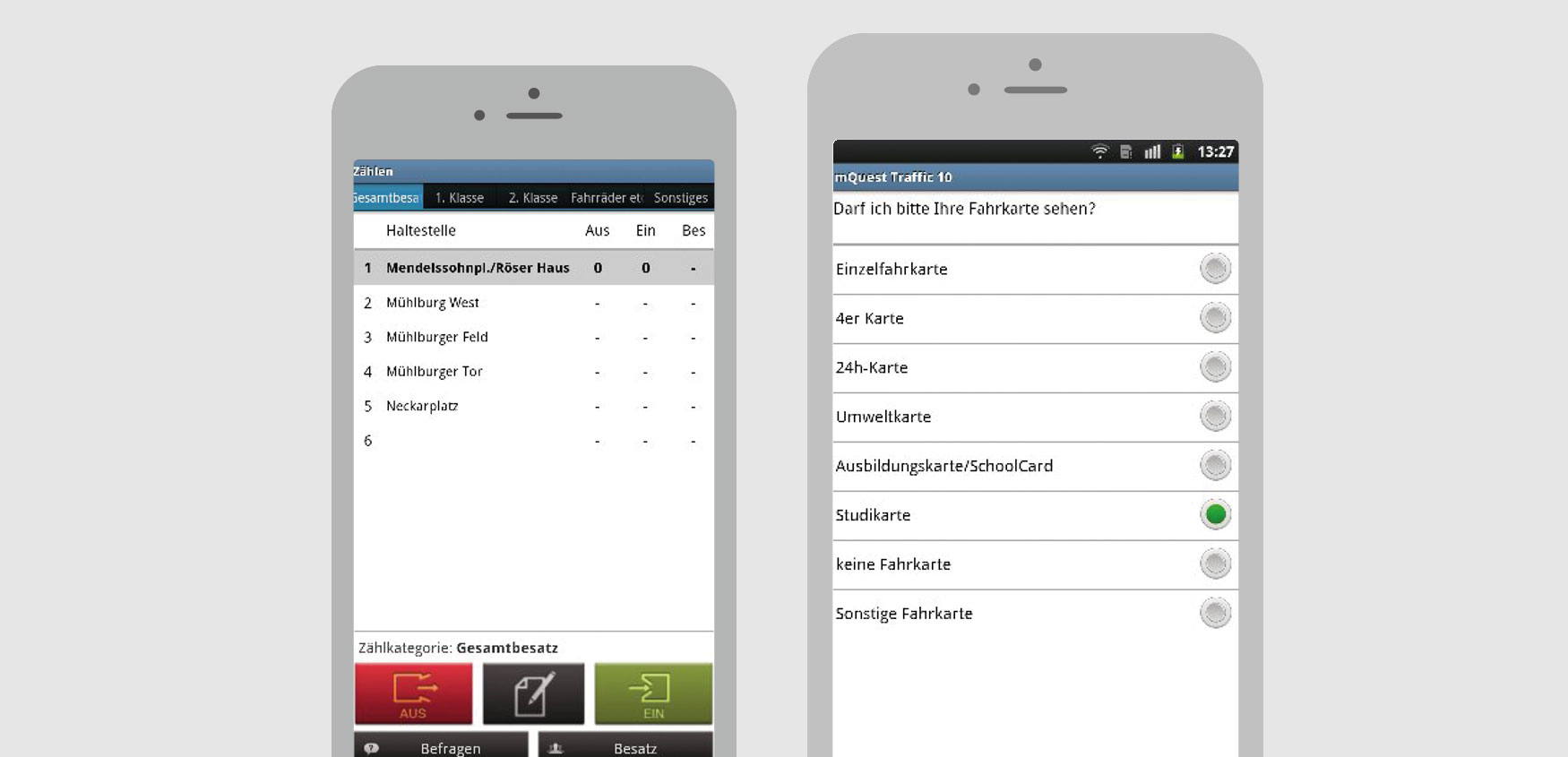Software for traffic surveys
without any detours.
Count or ask? How about both? Adapted user guidance as well as specific counter modules make mQuest® Traffic the ideal passenger.
Traffic surveys (interviewing and tracking boarding and exiting passengers) provide valuable information about timely and spatial use of the service by their customers to transport companies and transport associations.
With mQuest® Traffic, traffic surveys can be executed in an accurate and digital way. Collected data is stored centrally, available at any time and the perfect basis for income distribution systems and upcoming planning tasks.

Count or ask? Both!
Switch seamlessly between counting and surveying during traffic surveys
The counting model of mQuest® Traffic has been developed specifically for traffic surveys. With the counting module boarding and exiting passengers of different categories at any stop can be tracked easily, also manually. Switching between counting and surveying module is possible at any time. Therefore boarding and exiting passengers can even be counted during an ongoing survey.
Even works in the tube.
Mobile offline data collection at traffic surveys
mQuest® is fully deployable even without internet connection. Via digital forms all relevant data is saved securely on a tablet or smartphone and can – with an existing internet connection – be synchronized with the database. Therefore reliable traffic surveys can even be executed in areas with weak internet connection, for example in the subway.
From the home station to the terminal.
Smart integration of transit maps in surveys
Sequences of stations and transit maps can easily be integrated into mQuest®. The sequences of stations of each line are created with spreadsheet programs, like Excel, and subsequently deposited into the questionnaire. Certain stations can be selected on the mobile device via auto-fill-lists.
Tickets, please.
Scan eTickets with mQuest® during traffic surveys easily
With the new eTicket question type, eTickets can be entered directly into mQuest® according to the VDV corn application. Simply select the ticket and relevant information such as ticket number, validity start and end date, ticket product ID and ticket organization are completely stored in the dataset.
Always know, where you're at.
Automatic recordings of geocoordinates in traffic surveys
With mQuest® geodata can be captured automatically during surveys. The collected GPS-data is saved along with the data set. Therefore it is always transparent which results occurred at which station or on which line.





![[Translate to English:] Innovtaiv durch Forschung Logo](/fileadmin/_processed_/0/1/csm_Innovtaiv-durch-Forschung_b12b1b5587.png)
![[Translate to English:] Kununu Logo](/fileadmin/_processed_/f/f/csm_Kununu-Top-Company_7b29c9d696.png)